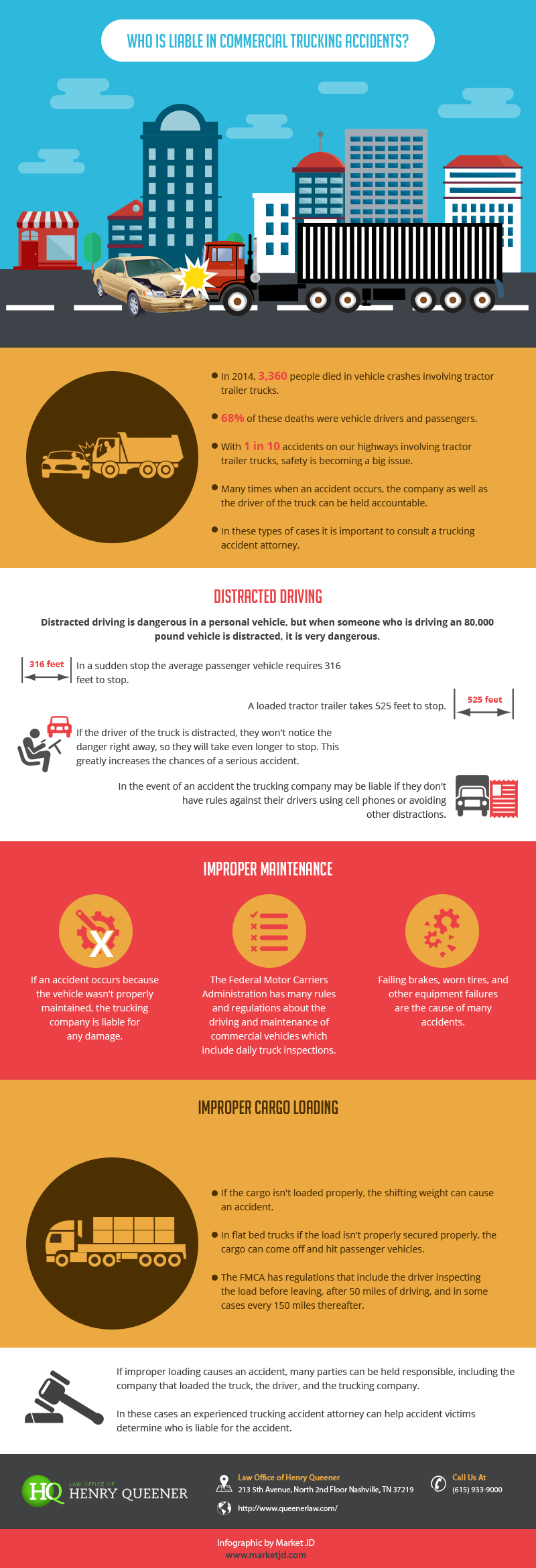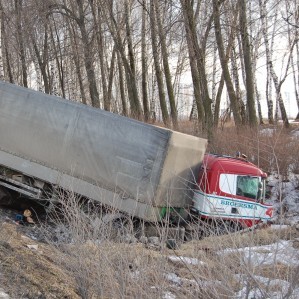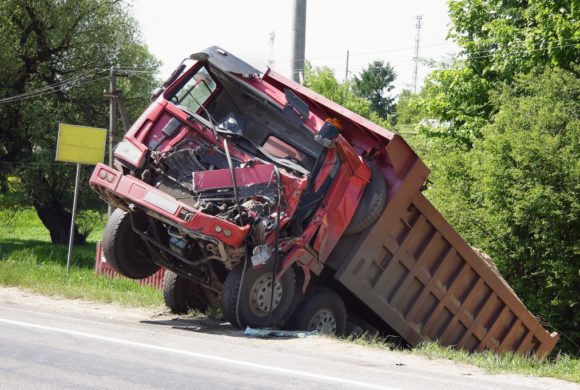
by Queener Law | Feb 28, 2016 | Colorado, Kentucky, Tennessee, Trucking Accident
Every year, about 500,000 large truck accidents occur in the United States, according to the U.S. Department of Transportation. About one percent of these result in fatalities. Nearly all of those killed in trucking accidents are in passenger vehicles, and even though truck drivers are safer drivers than the average commuter, they still present a huge danger on the road.
Recent legislation passed in the U.S. House risked making truck accidents even more likely in 21 states around the country that require truckers to take regular rest and meal breaks, much like workers in other industries. The amendment in a massive six-year transportation bill was ultimately removed from the bill. This is fortunate, as driver fatigue is one of the top causes of trucking accidents.
Rest Increases Driving Safety
The likelihood of the need to contact a truck wreck lawyer increases when truckers drive tired. According to an Australian study, being awake for eighteen hours causes a driver to act like someone with a .05 blood alcohol content. Pushing that to 24 hours makes the driver even worse than a legally drunk person. People who sleep less are also more likely to crash. Those that sleep fewer than five hours each night are five times more likely to have an accident than someone who averages eight hours of sleep per night.
A complete study of the causes of trucking accidents found that driver fatigue is the lead cause in 13% of all large truck accidents. While passenger vehicle drivers are twice as likely to have fatigue cause an accident, if it could be removed as a cause of truck accidents there is the potential for saving many lives each year and reducing the amount of injuries as well.
Even a 50% decline in fatigue related trucking accidents could save around 200 lives on U.S. roads. Unfortunately, less than half of all states require that truck drivers take mandatory breaks for rest and meals. Most truck drivers do take care of their health by getting enough sleep and taking breaks when necessary. State trucking policies do not encourage drivers to do so however. A truck wreck lawyer could confirm that one small mistake on the roads can be catastrophic when it involves a large truck. Truckers should be encouraged to operate safely and at their best, not while tired and hungry.

by Queener Law | Feb 18, 2016 | Colorado, Kentucky, Tennessee, Trucking Accident
According to the National Highway Traffic Safety Administration (NHTSA), there are approximately 10 fatal truck accidents and truck crashes that result in a shocking 284 injuries each day throughout the United States. With fatal trucking accidents up approximately 18 percent since 2009, and those that cause injuries up an estimated 23 percent, it is obvious that something needs to be done.
A good place to start would be for truckers, drivers of other vehicles sharing the road with truckers, and even bicyclists and pedestrians to develop a better understanding of what causes so many catastrophic accidents. In 2007, the Federal Motor Carrier Safety Administration decided to become proactive in the investigation of large truck accidents. They released a report, called The Large Truck Causation Study, which is the first of its kind to examine the true causes of large truck related accidents.
10 of the Most Common Causes of Truck Accidents According to the Study
The study evaluated a sample of 967 large truck accidents nationwide. 1,127 large truck and 959 vehicles of other types were involved in the study. The accidents investigated resulted in an alarming 251 fatalities and 1,408 injuries. The top 10 causes of big rig accidents according to the study are shocking.
- While driver fatigue was expected to have been the top cause of large truck accidents, it made its place further down the list for this study. According to the study, the most common cause of trucking accidents is actually drug use. In fact, an alarming 26 percent of the accidents studied revealed that prescription or illegal drug use had an impact on the driver’s reaction time.
- The second most common cause of large truck accidents was speeding. Crunched deadlines make speeding a temptation for many truckers, but succumbing to the temptation to speed can have catastrophic results. For each mile of increased speed, the impact of a massive 80,000 pound truck is more devastating.
- Not being familiar with the roadways in the areas that truckers were traveling was a major cause in a whopping 22 percent of large truck accidents.
- Accident causes are not limited to the use of prescription or illegal drugs. In a disturbing 18 percent of accidents studied, the use of over the counter medications was discovered to be a contributing factor.
- Blind spots have always been a big concern for truckers and other drivers who are sharing the road, so it is not surprising that 14 percent of accidents involved the truck driver not checking his or her blind spots thoroughly enough. While it is essential for truckers to take the initiative to check for other vehicles before making a move, the drivers of other vehicles need to be aware of potential blind spots and avoid them whenever possible as well.
- Although countless measures have been taken throughout the past few years to ensure that truckers are getting adequate sleep and rest periods, approximately 13 percent of large truck accidents involved drivers who were fatigued. It is important to note that driver fatigue can sometimes be related to high stress levels, medications, alcohol use, and poor diet, and is not just related to drive time.
- Illegal maneuvering by the trucker, like failing to use a turn signal was at least partially responsible for 9 percent of accidents involving large trucks.
- Distracted driving has been a major topic for safety advocates for many years, and legislation is in place that is intended to reduce the number of drivers who operate while distracted by cellphones, multimedia devices, and other electronics. As the study reveals, however, distracted driving continues to remain a problem. In 8 percent of accidents studied, distracted driving played a role. The events reported were not always due to the use of electronics, however. Many were actually due to the trucker becoming distracted by events outside the truck like accidents or roadwork.
- Big rigs can be difficult to maneuver, especially in emergency situations. According to the study, the truckers lack of realizing the level of evasive action needed to avoid an accident was involved in 7 percent of large truck accidents. In many cases, truckers underestimated the time that it would take them to slow down and they either followed too closely or failed to begin breaking soon enough.
- Aggressive driving and road rage contributed to 7 percent of the large truck accidents studied.
Another major cause of accidents that involve large trucks is equipment failure. Improper maintenance, low quality equipment, unattended repairs, and defective equipment have all been factors in trucking accidents throughout the nation. When equipment on a large truck fails, the result can be catastrophic regardless of how safe the driver, or other drivers around him are.

by Queener Law | Feb 16, 2016 | Colorado, Kentucky, Tennessee, Trucking Accident
In 2014 3,360 people died in vehicle crashes involving tractor trailer trucks. 68% of these deaths were vehicle drives and passengers. With one in ten accidents on our highways involving tractor trailer trucks, safety is becoming a big issue. Many times when an accident occurs the company as well as the driver of the truck can be held accountable. In these types of cases it is important to consult a trucking accident attorney.
Distracted Driving
Distracted driving is dangerous in a personal vehicle, but when someone who is driving an 80,000 pound vehicle is distracted, it is very dangerous. In a sudden stop the average passenger vehicle requires 316 feet to stop. A loaded tractor trailer takes 525 feet to stop. Those 200 feet can mean the difference between life and death. If the driver of the truck is distracted, they won’t notice the danger right away, so they will take even longer to stop greatly increasing the chances of a serious accident. In the event of an accident the trucking company may be liable if they don’t have rules against their drivers using cell phones or avoiding other distractions.
Improper Maintenance
If an accident occurs because the vehicle wasn’t properly maintained, the trucking company is liable for any damage. The Federal Motor Carriers Administration has many rules and regulations about the driving and maintenance of commercial vehicles. These regulations include daily truck inspections. Failing brakes, worn tires, and other equipment failures are the cause of many accidents. Sadly these types of accidents can be prevented with proper maintenance.
Improper Cargo Loading
Improper cargo loading also causes many accidents. If the cargo isn’t loaded properly, the shifting weight can cause an accident. In flat bed trucks if the load isn’t properly secured properly, the cargo can come off and hit passenger vehicles. The FMCA has regulationsin place regarding cargo loading and inspection. These include the driver inspecting the load before leaving, after 50 miles of driving, and in some cases every 150 miles thereafter. If improper loading causes an accident, many parties can be held responsible. The company that loaded the truck, the driver, and the trucking company can be held liable. In these cases an experienced trucking accident attorney can help accident victims determine who is liable for the accident.

by Queener Law | Feb 15, 2016 | Tennessee, Trucking Accident
Two Nashville road crew workers ended their work day on January 30 in the hospital after the scaffolding they were on was struck by a semi-truck. The men were working on an overpass section of the interchange between I-65 and I-440.
The accident occurred in mid-afternoon, typically a less dangerous time for construction crews. The truck truck collided with the bottom of the scaffolding, causing it to detach from the overpass. One of the men fell to the roadway below, while the other was able to remain on the scaffolding.
“An accident like this shows the danger from tractor-trailers on the road today,” says truck wreck attorney Henry Queener. “An accident can happen anywhere in Nashville, causing serious injury or even death to the victims.”
Damage to the truck’s trailer was extensive, with the roof being peeled off. The truck driver was not injured in the accident. Under Tennessee law, drivers must slow down or change lanes when construction workers are present. It is unclear at this time as to why the driver did not do so.
The Tennessee State Patrol responded to the accident and reported that the investigation into the accident would continue. No charges were filed against the driver of the tractor-trailer.
Both of the Tennessee Department of Transportation workers were transported to a local hospital for treatment and were expected to make a complete recovery. If the driver of the tractor trailer did not follow proper rules of the road, they may have cause to contact a truck wreck attorney to further investigate the case.
Being Saturday afternoon, impact on traffic flow was minor. Traffic remained backed up for a short time after the accident but was quickly cleared.
The identity of the workers and the truck driver involved in the accident were not released by the State Patrol.

by Queener Law | Feb 13, 2016 | Tennessee, Trucking Accident
Slippery roads and icy conditions are common sights during the winter months. With the encroachment of winter weather conditions, the importance of proper truck maintenance can’t be understated. From tires to turn signals, the safety systems modern semi-trucks are equipped with are designed to reduce the possibility that the truck will be involved in an accident. Even so, the Federal Motor Carrier Safety Administration reports that there has been a 20% increase in the number of truck involved accidents over the past decade.
It’s estimated to cost roughly 12 cents per mile driven to properly maintain a semi-truck. Annually, this amounts to roughly 10% of the total cost of operation. While this amount may seem significant, the cost of not maintaining a semi-truck is considerably higher as it can lead to accidents, injuries, and fatalities down the road.
Coupled with adverse weather conditions, neglected, or improperly conducted maintenance can become a dangerous combination. Mix in poorly maintained roads, traffic, and decreased visibility and a poorly maintained truck can quickly become a lethal instrument.
In 2007 the FMCSA released the Large Truck Crash Causation Study. The study examined the causative factors behind crashed that took place between April 2001 and December 2003. Of the 141,000 accidents that took place during that time, vehicle maintenance and poor environmental/weather conditions were cited as critical factors in nearly 10,000 accidents.
The study examined the overall conditions of the truck and estimated that brake problems were contributing factors in 41,000 accidents. These problems included worn pads, malfunctioning air compressors, disconnected cables, etc. It further showed that bald and crumbling tires contributed to 8,000 crashes. Combined, this means that poor vehicle maintenance was a factor in more than 1/3 of all accidents occurring during this time.
For comparison, bad weather and road conditions were cited as contributing factors in 29,000 crashes. With 20% of semi-truck accidents caused in part because of ice, snow, rain, fog, and poorly maintained roads; and brake and tire problems cited in 34%, the danger becomes obvious. So obvious in fact that law enforcement is stepping up inspection efforts to help mitigate the problem.
The Department of Transportation’s statistics show that of all traffic citations issued to truck drivers in 2012, 72% involved maintenance violations. The number was slightly higher in 2013 at 72.6%. Overall, the national average was 1.6 violations per vehicle inspection. The citations issued ranged from malfunctioning turn signals and misaligned mirrors, to improperly inflated tires and worn brake cables.
Of course, it is those drivers that law enforcement isn’t catching who are at greatest risk of becoming a fatality statistic. In 2011, the Department of Labor’s data showed that truck drivers experienced 24 fatalities per 100,000 drivers. Statistically, that made “Truck Driver” the 8th most dangerous job in America that year. Realistically, the 851 drivers who died represented the largest loss of life of all the occupations studied.
The vast majority of the deaths occurring within the trucking industry can be directly tied to neglected maintenance, poorly performed maintenance, and adverse weather conditions. Either of these three causative factors can lead to a crash by themselves. Combined, these factors will almost certainly lead to a crash.
These are issues the FMCSA regulations address by requiring drivers to use extreme caution when confronted with adverse weather conditions. In Tennessee, drivers failing to do so can be cited by law enforcement for failing to slow down when ice, rain, sleet, or low-visibility conditions are present. They may also be cited for failing to properly plan for stopping/turning on roads, driving without their lights turned on in fog or snow, or for operating their semi-trucks in high-wind conditions that make driving unsafe. Further, FMCSA regulations require that motor carriers and equipment providers must inspect, repair, and maintain their vehicles regardless of the financial costs involved in conducting this maintenance.
This includes all systems required for the safe operation of the vehicle. Further, drivers and companies are required to maintain records on their vehicles that clearly shows the vehicle’s maintenance history. In fact, it is largely because of these record keeping requirements that investigators have been able to show the direct links between maintenance, weather, and accidents.
Semi-truck accident lawyers and law enforcement understand the importance of enforcing these regulations which is why the state ranks 2nd in the nation for vehicle safety inspections. And, while the state’s truck involved fatality rate is dropping, it still ranks above the national average. With winter weather encroaching upon the state, now is the time for truck drivers to conduct any maintenance that has been neglected before the roads ice up, the winds start to blow, and the road ahead becomes less clear and a lot more dangerous.

by Queener Law | Feb 10, 2016 | Tennessee, Trucking Accident
ruck drivers throughout the nation spend countless hours driving in adverse weather conditions like high winds, ice and snow. Unfortunately, these road hazards frequently cause accidents that are catastrophic and sometimes deadly. The Michigan Center for Truck Safety, however, has created a solution that may prove to be extremely effective in reducing the number of truck accidents that result in devastating injuries and fatalities.
The use of innovative cold weather simulators help truckers identify potential dangers. These state of the art simulators have been around for a few years now, and an increasing number of both new and experienced truck drivers are coming away with lessons about their own habits and abilities in adverse weather conditions, as well as the capabilities and limitations of their massive vehicles. These simulators are designed to use a wide variety of scenarios and challenges that truckers often face under common cold weather road conditions. Demonstrating the effects of miscalculations and other errors helps drivers make real life adjustments to their driving behaviors, which is destined to help save lives.
Some of the scenarios that commonly cause truck accidents in cold weather months include:
- Following too closely
- Driving too fast for conditions
- Inexperience with driving in adverse weather conditions
- Overconfidence in the drivers abilities
- Failing to realize the limitations of the big rig in poor weather
Simulation of these scenarios enables truck drivers to realize the possible consequences of such issues without endangering them or other motorists on the road.
According to Nashville truck accident lawyer Henry Queener, “Requiring all commercial truck drivers to experience these types of cold weather simulations would be an optimal solution to help reduce the number of truck accidents on America’s roadways.” Unfortunately, it is not required by law for truckers to participate in simulation activities prior to operating big rigs in the United States.






